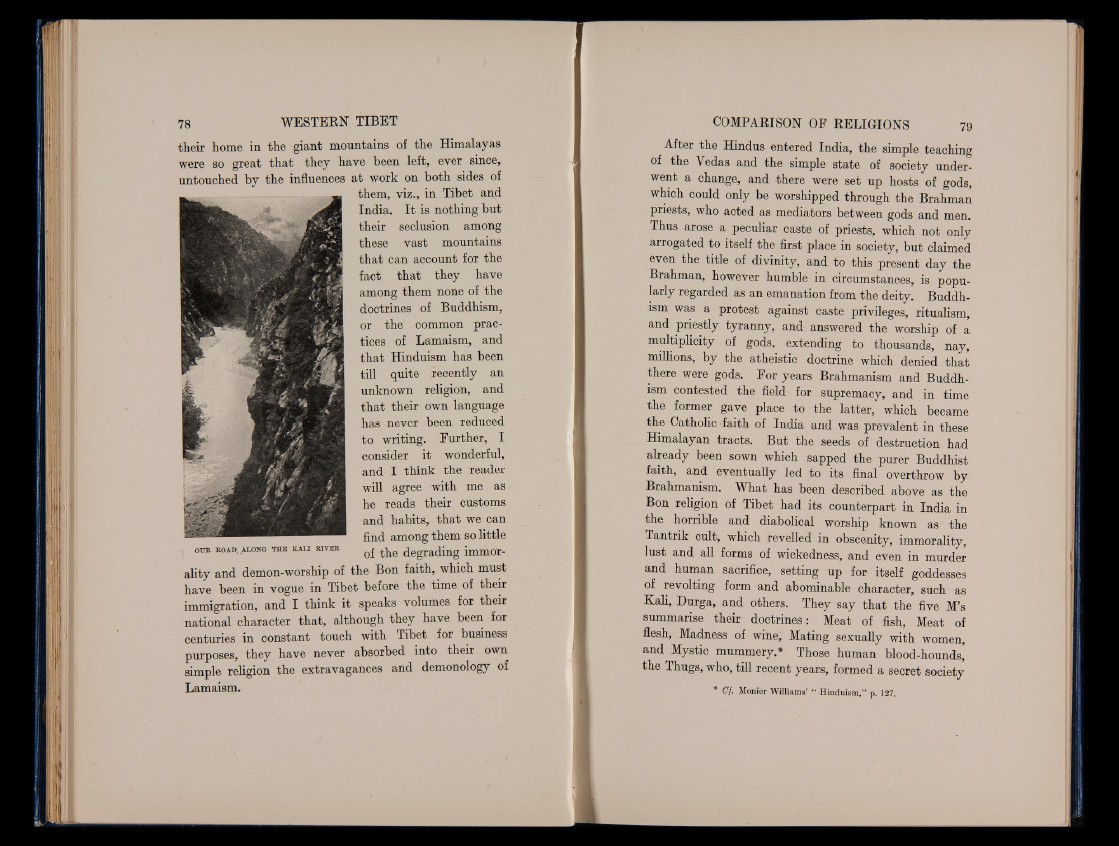
their home in the giant mountains of the Himalayas
were so great that they have been left, ever since,
untouched by the influences at work on both sides of
them, viz., in Tibet and
India. I t is nothing but
their seclusion among
these vast mountains
that can account for the
fact that they have
among them none of the
doctrines of Buddhism,
or the common practices
of Lamaism, and
that Hinduism has been
till quite recently an
unknown religion, and
that their own language
has never been reduced
to writing. Further, I
consider it wonderful,
and I think the reader
will agree with me as
he reads their customs
and habits, that we can
find among them so little
o u r r o a d , . a l o n g t h e K A u r i v e r Q| degrading immorality
and demon-worship of the Bon faith, which must
have been in vogue in Tibet before the time of their
immigration, and I think it speaks volumes for their
national character that, although they have been for
centuries in constant touch with Tibet for business
purposes, they have never absorbed into their own
simple religion the extravagances and demonology of
Lamaism.
After the Hindus entered India, the simple teaching
of the Vedas and the simple state of society underwent
a change, and there were set up hosts of gods,
which could only be worshipped through the Brahman
priests, who acted as mediators between gods and men.
Thus arose a peculiar caste of priests, which not only
arrogated to itself the first place in society, but claimed
even the title of divinity, and to this present day the
Brahman, however humble in circumstances, is popularly
regarded as an emanation from the deity. Buddhism
was a protest against caste privileges, ritualism,
and priestly tyranny, and answered the worship of a
multiplicity of gods, extending to thousands, nay,
millions, by the atheistic doctrine which denied that
there were gods. For years Brahmanism and Buddhism
contested the field for supremacy, and in time
the former gave place to the latter, which became
the Catholic faith of India and was prevalent in these
Himalayan tracts. But the seeds of destruction had
already been sown which sapped the purer Buddhist
faith, and eventually led to its final overthrow by
Brahmanism. What has been described above as the
Bon religion of Tibet had its counterpart in India in
the horrible and diabolical worship known as the
Tantrik cult, which revelled in obscenity, immorality,
lust and all forms of wickedness, and even in murder
and human sacrifice, setting up for itself goddesses
of revolting form and abominable character, such as
Kali, Durga, and others. They say that the five M’s
summarise their doctrines: Meat of fish, Meat of
flesh, Madness of wine, Mating sexually with women,
and Mystic mummery.* Those human blood-hounds*
the Thugs, who, till recent years, formed a secret society
* Of. Monier Williams’ “ Hinduism,” p. 127.